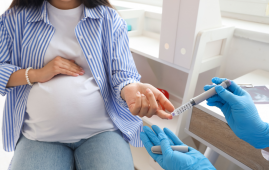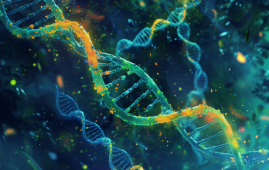

Groundbreaking MRI scans reveal microstructural hypothalamic changes in young women, uncovering a potential biological foundation for eating disorders such as anorexia and obesity.
Hypothalamic Changes in Eating Disorders
The hypothalamus is a critical brain structure responsible for regulating hunger, mood, and hormonal balance. Despite its central role in feeding behaviors, it has been underexplored in female-focused neuropsychiatric research—particularly regarding why women are disproportionately affected by eating disorders during adolescence.
Traditional imaging techniques often fail to capture detailed changes in the hypothalamus. However, a new ultrahigh-resolution T1 MRI has allowed scientists to map this region with remarkable precision.
New Insights from High-Resolution MRI Imaging
A study published in the American Journal of Clinical Nutrition examined 44 young adult females—including those with anorexia nervosa, obesity, and normal weight—using 7T MRI to assess volumetric and cellular integrity of 50 hypothalamic regions.
Key findings included:
-
Significant structural differences in para- and periventricular nuclei among participants with eating disorders.
-
Volume increases in certain hypothalamic regions were linked to inflammation, potentially driving disordered eating patterns.
-
Hormonal fluctuations, especially in leptin and ghrelin levels, correlated with the severity of eating disorders.
Why Young Women Are at Greater Risk
The research indicates that larger hypothalamic subregions—likely due to inflammation—could disturb the brain’s regulatory control over food intake. This helps explain the increased vulnerability of young women to disorders like anorexia and obesity.
Moreover, the study found associations between specific hypothalamic regions and markers of mood, anxiety, and BMI, painting a complex neurobiological picture of eating disorders in females.
Toward Targeted Treatments Rooted in Hypothalamic Changes
This pioneering research opens doors to more personalized treatment strategies. Notably, GLP-1 receptor agonists, which affect the arcuate nucleus, may help manage disordered eating behaviors.
Future studies should explore whether hypothalamic alterations precede the onset of symptoms. Longitudinal and connectivity-based research could further clarify the role of the extended limbic and cortical networks involved.
Conclusion
With the aid of advanced MRI techniques, researchers are now able to visualize the hidden neurobiological factors contributing to eating disorders. These insights could transform early diagnosis, risk assessment, and targeted interventions—especially for young women most at risk.
For more information: Witte, A. V., & Sacher, J. (2025) Unraveling neural underpinnings of eating disorders in the female brain: Insights from high-field magnetic resonance imaging. The American Journal of Clinical Nutrition. 121(5), pp. 943-944. doi:10.1016/j.ajcnut.2025.02.027
more recommended stories
 Fat-Regulating Enzyme Offers New Target for Obesity
Fat-Regulating Enzyme Offers New Target for ObesityKey Highlights (Quick Summary) Researchers identified.
 Spatial Computing Explains How Brain Organizes Cognition
Spatial Computing Explains How Brain Organizes CognitionKey Takeaways (Quick Summary) MIT researchers.
 Gestational Diabetes Risk Identified by Blood Metabolites
Gestational Diabetes Risk Identified by Blood MetabolitesKey Takeaways (Quick Summary for Clinicians).
 Phage Therapy Study Reveals RNA-Based Infection Control
Phage Therapy Study Reveals RNA-Based Infection ControlKey Takeaways (Quick Summary) Researchers uncovered.
 Pelvic Floor Disorders: Treatable Yet Often Ignored
Pelvic Floor Disorders: Treatable Yet Often IgnoredKey Takeaways (Quick Summary) Pelvic floor.
 Urine-Based microRNA Aging Clock Predicts Biological Age
Urine-Based microRNA Aging Clock Predicts Biological AgeKey Takeaways (Quick Summary) Researchers developed.
 Circadian Control of Neutrophils in Myocardial Infarction
Circadian Control of Neutrophils in Myocardial InfarctionKey Takeaways for HCPs Neutrophil activity.
 E-Cigarette Use and Heart Attack Risk in Former Smokers
E-Cigarette Use and Heart Attack Risk in Former SmokersKey Takeaways for Clinicians and Nurses.
 36-Week Pre-eclampsia Screening May Reduce Term Risk
36-Week Pre-eclampsia Screening May Reduce Term RiskA New Preventive Strategy for Term.
 Cardiovascular Risk and Sudden Cardiac Death in Diabetes
Cardiovascular Risk and Sudden Cardiac Death in DiabetesRising Sudden Cardiac Death (SCD) Risk.

Leave a Comment